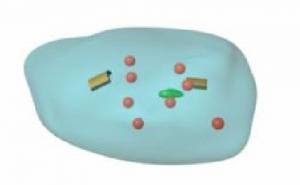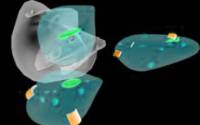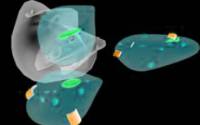[fusion_builder_container hundred_percent=”no” equal_height_columns=”no” menu_anchor=”” hide_on_mobile=”small-visibility,medium-visibility,large-visibility” class=”” id=”” background_color=”” background_image=”” background_position=”center center” background_repeat=”no-repeat” fade=”no” background_parallax=”none” parallax_speed=”0.3″ video_mp4=”” video_webm=”” video_ogv=”” video_url=”” video_aspect_ratio=”16:9″ video_loop=”yes” video_mute=”yes” overlay_color=”” video_preview_image=”” border_size=”” border_color=”” border_style=”solid” padding_top=”” padding_bottom=”” padding_left=”” padding_right=””][fusion_builder_row][fusion_builder_column type=”1_1″ layout=”1_1″ background_position=”left top” background_color=”” border_size=”” border_color=”” border_style=”solid” border_position=”all” spacing=”yes” background_image=”” background_repeat=”no-repeat” padding_top=”” padding_right=”” padding_bottom=”” padding_left=”” margin_top=”0px” margin_bottom=”0px” class=”” id=”” animation_type=”” animation_speed=”0.3″ animation_direction=”left” hide_on_mobile=”small-visibility,medium-visibility,large-visibility” center_content=”no” last=”no” min_height=”” hover_type=”none” link=””][fusion_text]
Ultra-short Pulsed Systems Electroperturbation Technology (UPSET) has the potential to become a new cancer treatment due to its ability to trigger apoptosis, the natural death mode of cells. During apoptosis, a cell initiates a self-termination process to remove it without affecting surrounding tissue. UPSET generates and delivers pulses of 40 kV/cm and 20 nanoseconds in duration to cancer cells. The electric fields target the internal organelles of the cell rather than the outer membrane as in traditional pulsed electric field research. Cells undergo electrical perturbation without experiencing structural damage or thermal heating. Future cancer treatments with UPSET could use catheter delivery systems that would be much less invasive than either surgical removal of tumors or chemotherapy. UPSET research is a collaboration between the University of Southern California (USC) Keck School of Medicine Department of Cell and Neurobiology and the USC Department of Electrical Engineering-Electrophysics.
Introduction
When cells become unhealthy or their numbers need to be managed, the body instigates a defined self-destruct process called apotosis and commonly referred to as “programmed cell death.” Cancer is a mutation that can occur in any type of cell, inhibiting normal growth and other regulatory functions. Since they are not receiving regulatory signals from neighboring ells, cancer cells grow at uncontrolled rates. Apoptosis is a major cell regulatory mechanism, for which cancer has resistance. Cancer cells fail to undergo apoptosis, and therefore exhibit increased life spans compared to their normal counterparts [1].
Although cancerous cells generally ignore signals to enter apoptosis, the cancer cells may be commanded to self-destruct by pulsed electric fields. Local delivery of fast electric field pulses could possibly be applied to cancer treatment in the future as alternatives to harsh chemotherapy and surgical removal of tumors.
Overview of the Research
Scientists in the University of Southern California’s Department of Electrical Engineering are developing new technology that can induce apoptosis in cancer cells by exposure to pulsed electric fields, called Ultra-short Pulsed Systems Electroperturbation Technology (UPSET). USC’s Pulsed Power research team, led by Dr. Martin Gundersen, designs state-of-the-art pulse generators and explores the ability of UPSET to induce apoptosis in human cancer cells (Fig. 1). This research is an interdisciplinary effort with collaboration between the Pulsed Power Team and the USC Keck School of Medicine Department of Cell and Neurobiology.
Researchers are investigating three main areas: the apoptotic response dependence on different USPET pulse characteristics, imaging of cells after pulse exposure, and application of UPSET to kill various different kinds of cells.
Introduction to Apoptosis
Apoptosis is a controlled form of death in which the cell disintegrates in a defined process without disrupting neighboring tissue. It does not occur if the cell suffers acute injury or is forcefully destroyed. In these cases, the cell dies by necrosis and ruptures. Its contents spill out and cause inflammation in surrounding tissue. Instead of causing such widespread damage, the end goal of apoptosis is to induce specialized cells called macrophages to “eat” the dead apoptotic fragments by phagocytosis. Apoptosis naturally occurs during tissue shaping to make way for new growth, removal of mutated cells, and regulation for a constant cell population [1].
Once a normal cell turns apoptotic, the cell communicates its impending death to other cells by relocating a lipid called phosphatidylserine from the inner surface of the cell membrane to the outer. The inversion is a signal to promote phagocytosis of the dying cell [2] and is an early indicator of apoptosis [3]. In early stages of the process, the mitochondria change drastically, forming inner membrane pores and releasing cytochrome-c into the cell [4]. Mitochondria are organelles with two membrane layers that produce the ATP energy for the cell to function. Cytochrome-c is an electron transporter inside the mitochondrion used in the production of ATP, but is toxic when released to the cytoplasm. Furthermore, cytochrome-c is an activator of specialized proteins called caspases, integral to apoptosis. The apoptotic cascade of one caspase activating others is the harbinger of impending doom. Degradation of the cell begins by the rupture of the nuclear envelope and cleavage of DNA strands. At the end of apoptosis, the entire cell breaks up into fragments, each encapsulated within a piece of the previous outer membrane material (see flash demo).

Illumin
Apoptosis: The Death of a Cell flash demo. (Flash)
Experiments Show that UPSET Induces Apoptosis
Experiments in UPSET within the past year have repeatedly induced apoptosis in leukemia cells (Jurkat T-lymphocytes) with a dose of 50 pulses [5]. Electric field pulses are 40 kV/cm in amplitude, 20 nanoseconds (ns) in width, and are delivered at a rate of 20 pulses per second. The onset of apoptosis is detected by three key changes in the cell: phosphatidylserine inversion to the outside of the cell membrane, loss of mitochondrial membrane voltage potential, and the presence of activated caspases. Inversion of phosphatidylserine begins immediately after UPSET exposure and is observed in a majority of the cell population. A mitochondrion has a voltage potential across its inner membrane associated with the oxidative respiration to produce ATP. When that membrane becomes porous, ions leak through and the voltage drops, thus impairing respiration. The fluorescent micrographs show leukemia cells lacking mitochondrial membrane voltage one hour after treatment with 50 UPSET pulses. The red spots of the pre-UPSET image mark the healthy mitochondria that have a transmembrane voltage. After UPSET pulse exposure the cells appear mostly green with few red spots of voltage potential, indicating that the mitochondria have ceased normal functions of energy production.
Observation Techniques after Treatment
After cells are treated with UPSET they are observed with optical methods. The most powerful tools for probing a cell are fluorescent dyes; such dyes specifically bind to proteins of interest in a cell, causing the dye to emit a different wavelength (color) of light. These dyes used for cell imaging also bind to specific targets including nucleic acids, lipids, ions, and other species and can be seen standard methods, such as spectroscopy, fluorescence microscopy, and flow cytometry.
Pulsed Electric Fields
An electric field is a region of force vectors that push only against charged particles such as electrons. When a voltage potential is generated between two electrodes, an electric field exists that will accelerate any free electrons from the negative to the positive electrode. One theory about how UPSET causes cell apotosis is that the electric fields act upon charged groups of atoms to bend enzyme molecules into different conformations. This changes the functionality of an enzyme and thus the biochemical operations in the cell.
UPSET uses ultra short pulsed electric fields. Short duration square pulses are generated with very fast transition time from the off to on state. UPSET pulses are typically 20 ns in length that switch from 0 to 4,000 volts in approximately 1 ns. To relate the significance of switching a 20ns pulse, light can travel a distance of only 0.300 m (0.984 ft) in the time of one nanosecond. UPSET pulse generators employ a combination of high-voltage MOSFET transistors, Pulse Forming Networks, and plasma switches to precisely deliver a small amount of energy to cells in a tiny moment of time.
How Fields Interact with Cells
There are three categories for interaction of electric fields with cells, and thus three main areas of biological applications. In descending order of electric field amplitude, they are electroperturbation, electropermeabilization, and electroporation. As the pulse width increases, less electric field is needed to affect cells [6]. Electroperturbation is the new category of pulse treatments such as UPSET, in which the pulses are intense but so brief that no heating occurs. It is important in UPSET to deposit very little energy into the cell so that it is not destroyed by heat, but rather is only influenced by the electric field forces. This can only be achieved with ultra short pulse duration, commonly known as nanosecond pulsed electric fields (nsPEF). Additionally, the fast rise time in the “off” to “on” transition of electroperturbation pulses can drive high pulsed current through the insulating cell membrane to the organelles within. UPSET pulses have a greater effect on the internal organelles than on the cytoplasmic membrane. The second technique, electropermeabilization, lies in the microsecond pulse range and manipulates outer membrane. For example electropermeabilization could permeabilize the outer membrane to promote absorption of drugs or other large molecules. Electroporation, the last technique, relies on pulses lasting from microseconds to milliseconds [7]. This technique is used for drug delivery, for fusion of two individual cells, and for sterilizing food. Electroporation uses longer duration fields to open large pores in the cell membrane. These pores may be reversible (they can reseal) or the pulses may kill the cell by necrosis if the dose is too strong.
Advantages of UPSET for Electroperturbation
UPSET pulsed power is able to impose electric fields inside the cell with three critical improvements over traditional pulse treatments. First, the pulses contain less energy because of their short duration. Therefore UPSET does not trigger thermal responses in the cells since insufficient energy is delivered to significantly raise cell temperature. Second, the short pulse duration induces apoptosis, but does not allow enough time to form “leaks” (pores) in the cell’s outer membrane. Apoptosis can be induced with longer pulses [8], but it would not be isolated from the effects of electroporation. Third, the fast rise in voltage drives current into the cell instead of around its insulating outer membrane. This creates internal electric fields that can manipulate the membranes of the mitochondria and nucleus of the cell.
The Future of UPSET
UPSET research is still in early stages; researchers have answered few questions about this new technique. However, the demonstrated ability of UPSET to induce apoptosis in human cancer cells makes it an important field of research for future applications. In possible clinical applications, UPSET pulses could be delivered locally to a tumor with the catheters commonly used today for probing the body through blood vessels or through tiny incisions. Using the thin rod-like catheter to reach a deep tumor with UPSET would be less invasive than the large incision that is currently made to remove a tumor. UPSET is potentially useful for cancer treatment because it can induce apoptosis without the negative side effects of thermal heating or electroporation.
[/fusion_text][/fusion_builder_column][/fusion_builder_row][/fusion_builder_container]




